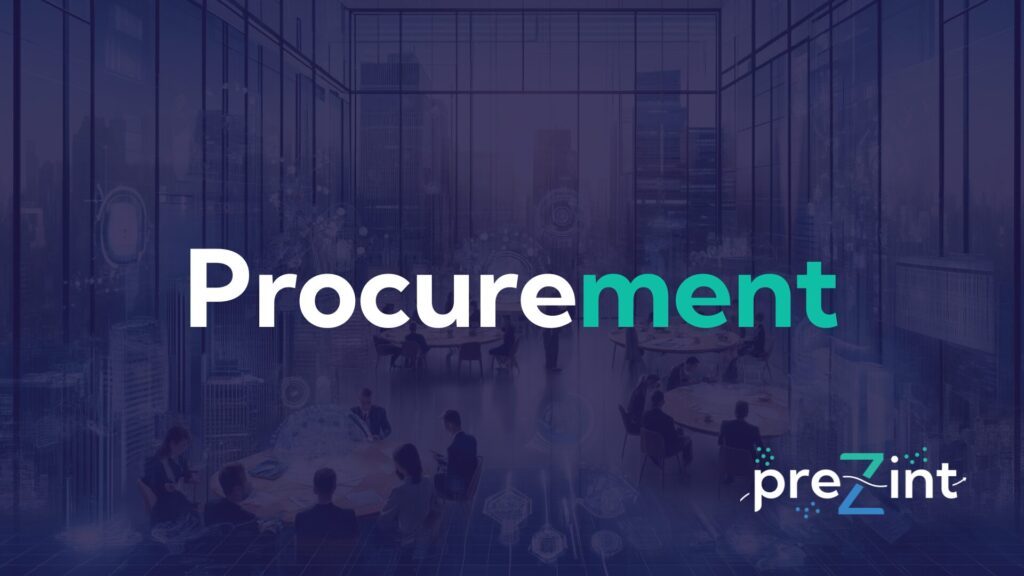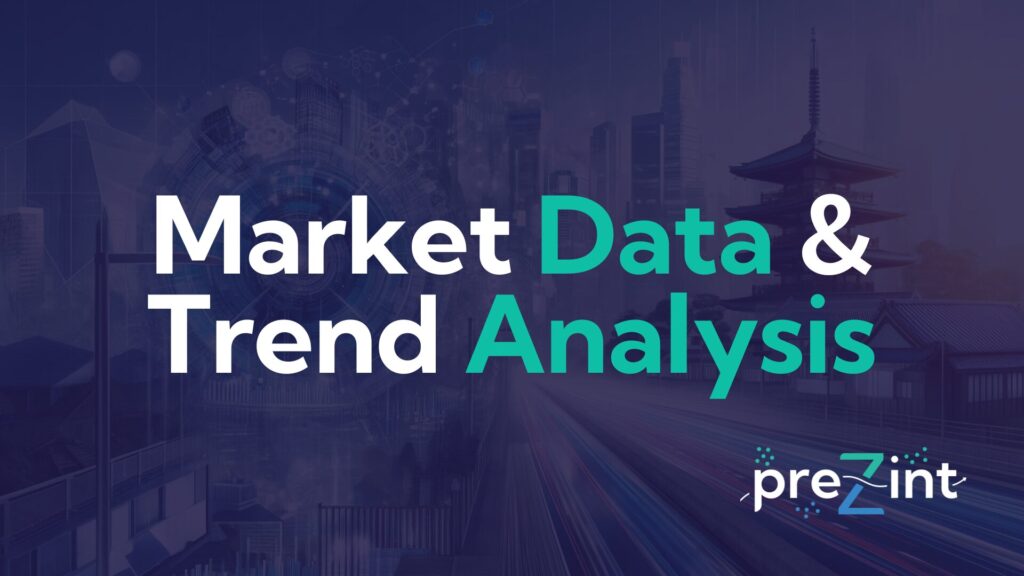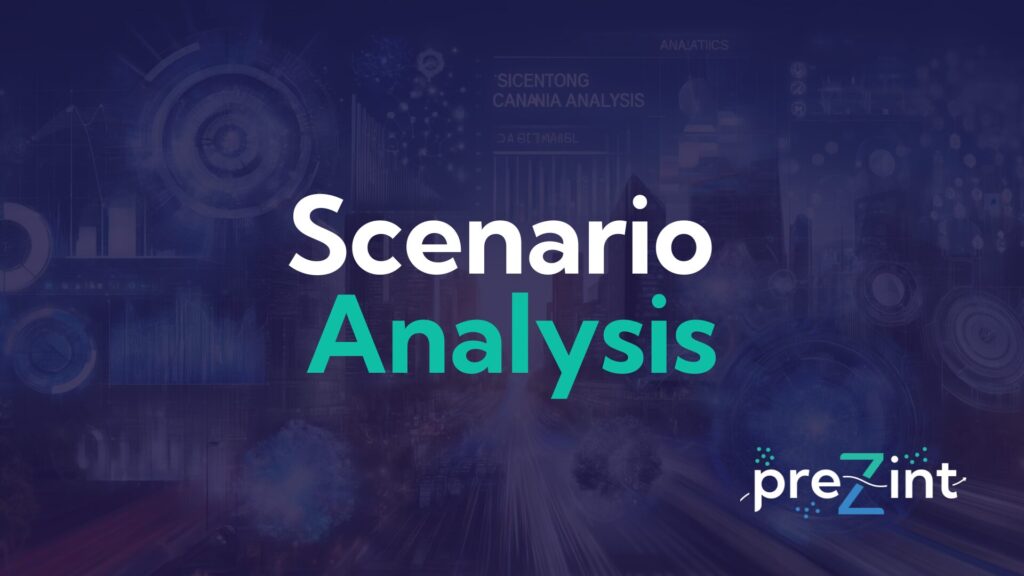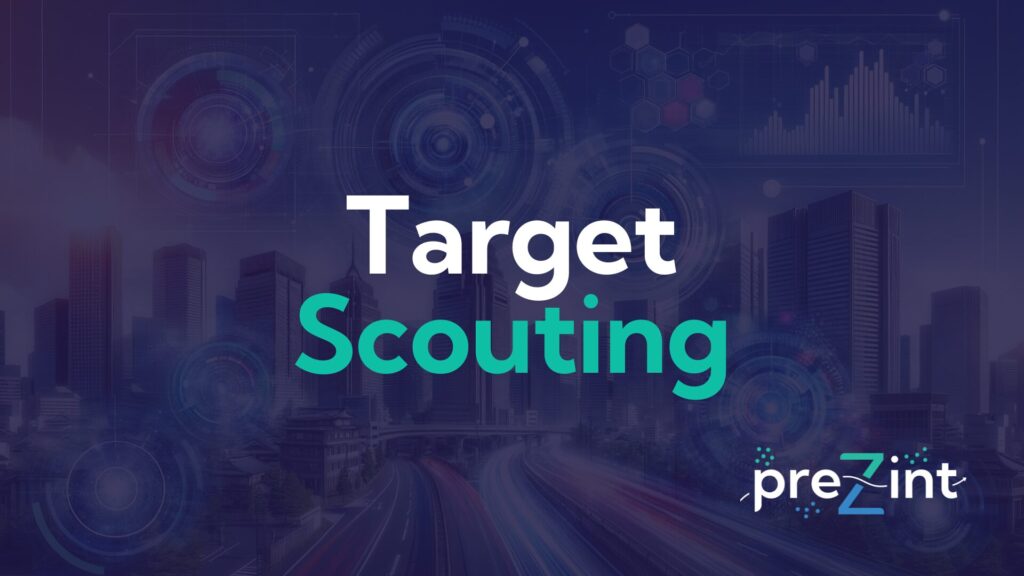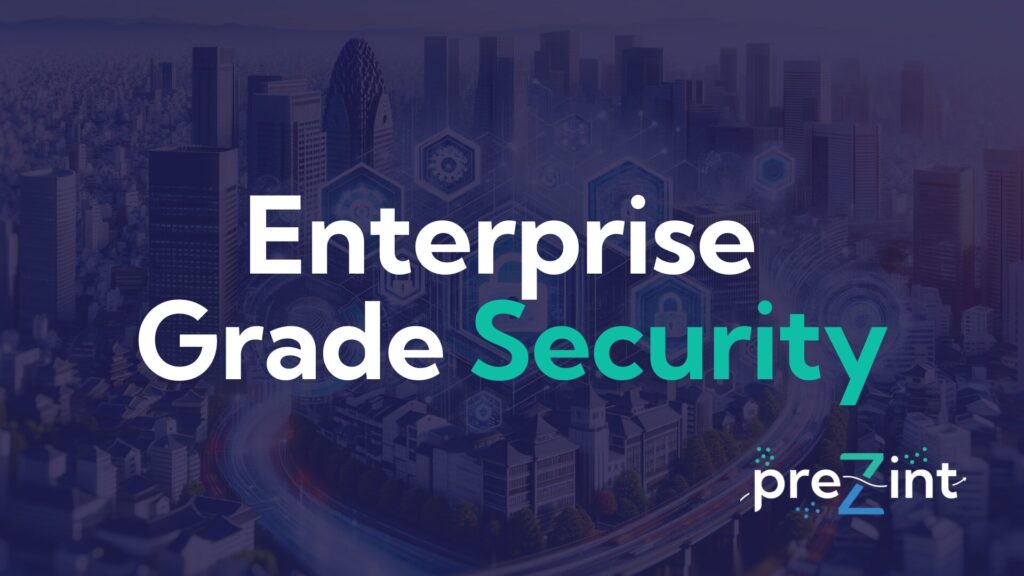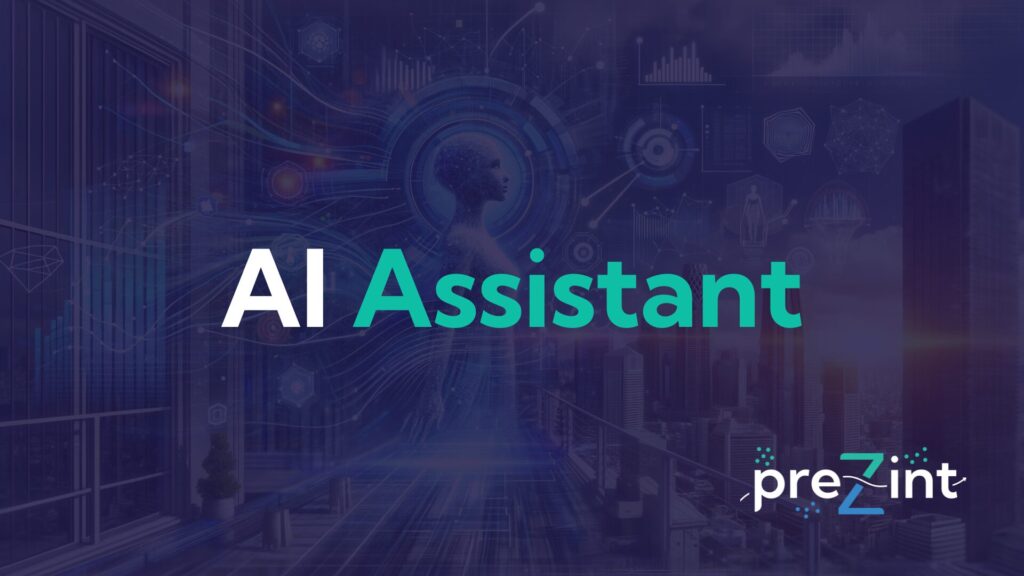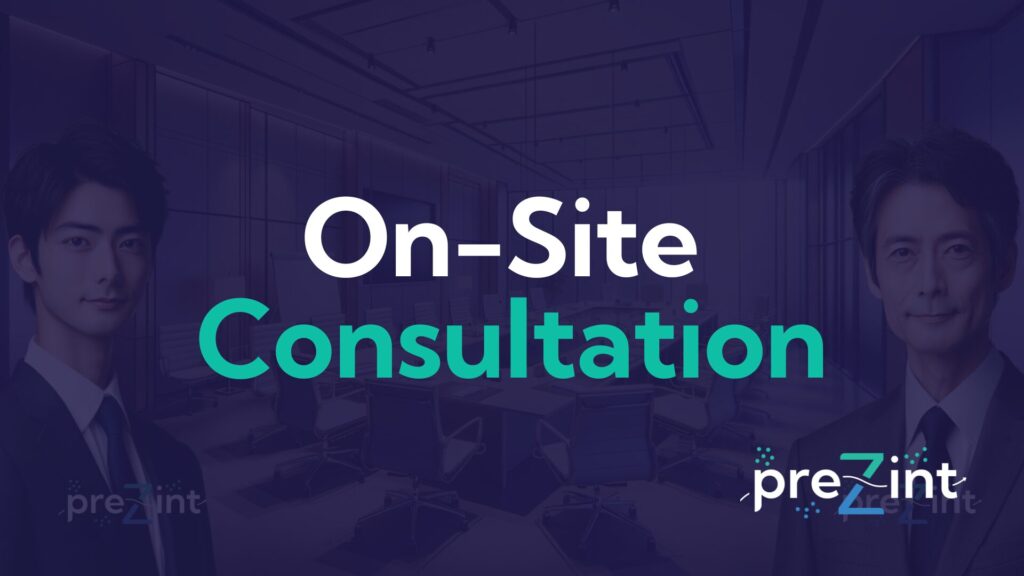Enhancing The Procurement
Process With preZint
In today’s rapidly evolving business landscape, procurement divisions
within Japanese enterprises face numerous challenges.
within Japanese enterprises face numerous challenges.
Managing supplier relationships, ensuring data accuracy, and
navigating complex regulatory requirements are just a few of
the critical issues that procurement professionals must tackle daily.
navigating complex regulatory requirements are just a few of
the critical issues that procurement professionals must tackle daily.
This blog post explores how preZint supports procurement divisions
in addressing these common problems, providing a seamless,
integrated approach to procurement management.
in addressing these common problems, providing a seamless,
integrated approach to procurement management.
Challenges In Procurement
Data Silos
Procurement divisions often struggle with data silos, where critical
information is fragmented across multiple systems and platforms:
information is fragmented across multiple systems and platforms:
Fragmented Data: Different suppliers use various systems for inventory,
order management, and performance tracking, such as ERP (Enterprise
Resource Planning), SCM (Supply Chain Management), and supplier-specific
portals. This fragmentation makes it challenging to consolidate and analyze
procurement data holistically.
order management, and performance tracking, such as ERP (Enterprise
Resource Planning), SCM (Supply Chain Management), and supplier-specific
portals. This fragmentation makes it challenging to consolidate and analyze
procurement data holistically.
Manual Data Transfer: Procurement teams often have to manually transfer data
between systems. For example, data on supplier performance might be stored
in an ERP system, while order details are kept in a separate SCM system. This
manual process involves extracting data from one system, such as downloading
CSV files, and manually entering it into another system. This introduces errors,
delays, and inefficiencies, consuming valuable time that could be spent on
strategic tasks.
between systems. For example, data on supplier performance might be stored
in an ERP system, while order details are kept in a separate SCM system. This
manual process involves extracting data from one system, such as downloading
CSV files, and manually entering it into another system. This introduces errors,
delays, and inefficiencies, consuming valuable time that could be spent on
strategic tasks.
Limited Visibility: The lack of integration between systems results in delays in
data updates and a fragmented view of the supply chain. For instance, if the
ERP system tracks inventory levels but does not communicate with the SCM
system managing supplier orders, it becomes difficult to see how current inventory
levels affect future procurement needs. Additionally, performance metrics stored in
supplier-specific portals may not be easily accessible, making it challenging to
correlate supplier performance with procurement outcomes.
data updates and a fragmented view of the supply chain. For instance, if the
ERP system tracks inventory levels but does not communicate with the SCM
system managing supplier orders, it becomes difficult to see how current inventory
levels affect future procurement needs. Additionally, performance metrics stored in
supplier-specific portals may not be easily accessible, making it challenging to
correlate supplier performance with procurement outcomes.
Inconsistent Data Formats: Different systems often store data in various formats,
such as PDFs, TXT files, spreadsheets, and proprietary database formats. Integrating
these formats into a single, actionable dataset is complex and time-consuming.
For example, a supplier’s performance report in PDF format might need to be
manually transcribed into a spreadsheet, while order details in TXT files might
need to be imported into the SCM system, complicating data analysis and
decision-making.
such as PDFs, TXT files, spreadsheets, and proprietary database formats. Integrating
these formats into a single, actionable dataset is complex and time-consuming.
For example, a supplier’s performance report in PDF format might need to be
manually transcribed into a spreadsheet, while order details in TXT files might
need to be imported into the SCM system, complicating data analysis and
decision-making.
These silos hinder the ability to access real-time, accurate data, leading
to inefficiencies and missed opportunities for optimization. The inability
to quickly consolidate and analyze data from multiple sources can delay
critical decisions and reduce overall operational efficiency.
to inefficiencies and missed opportunities for optimization. The inability
to quickly consolidate and analyze data from multiple sources can delay
critical decisions and reduce overall operational efficiency.
Supplier Risk Management
Procurement divisions face numerous challenges in managing supplier risks,
which can lead to significant disruptions and financial losses. Key areas of
concern include financial instability, geopolitical issues, natural disasters,
and regulatory compliance. Here’s a detailed look at these challenges:
which can lead to significant disruptions and financial losses. Key areas of
concern include financial instability, geopolitical issues, natural disasters,
and regulatory compliance. Here’s a detailed look at these challenges:
Financial Instability: Financial instability in suppliers can pose significant risks
for procurement. Suppliers facing liquidity issues, high debt levels, or poor
cash flow management may fail to deliver goods on time or at all. This can
lead to production delays, increased costs from finding alternative suppliers
at short notice, and potential breaches of contract. The procurement team
needs real-time financial health updates of suppliers to proactively manage
and mitigate these risks. Without real-time insights, procurement teams might
rely on outdated financial reports, leading to unexpected supply chain disruptions
and the need for costly, last-minute adjustments.
for procurement. Suppliers facing liquidity issues, high debt levels, or poor
cash flow management may fail to deliver goods on time or at all. This can
lead to production delays, increased costs from finding alternative suppliers
at short notice, and potential breaches of contract. The procurement team
needs real-time financial health updates of suppliers to proactively manage
and mitigate these risks. Without real-time insights, procurement teams might
rely on outdated financial reports, leading to unexpected supply chain disruptions
and the need for costly, last-minute adjustments.
Geopolitical Issues: Political instability, such as coups, civil unrest, or sudden
government changes, can severely impact suppliers, especially those in
volatile regions. Trade restrictions, including tariffs or embargoes, can
disrupt supply chains. Other geopolitical factors, such as sanctions or
diplomatic conflicts, can also pose risks. Procurement teams need real-time
updates on these issues to anticipate and mitigate risks, ensuring a steady
supply chain.
government changes, can severely impact suppliers, especially those in
volatile regions. Trade restrictions, including tariffs or embargoes, can
disrupt supply chains. Other geopolitical factors, such as sanctions or
diplomatic conflicts, can also pose risks. Procurement teams need real-time
updates on these issues to anticipate and mitigate risks, ensuring a steady
supply chain.
Natural Disasters: Natural disasters can have a devastating impact on
supply chains, creating significant challenges for procurement teams.
For example, during a major flood, procurement teams might struggle
to quickly assess which suppliers are affected, what the potential delays
are, and how to reroute orders to maintain supply chain continuity.
Traditional methods, such as relying on weather apps, news updates, or
static reports, can be slow and lack comprehensive data, leading to delayed
responses and increased costs. Procurement teams need timely and actionable
information to respond effectively to such events. The complexity of managing
and interpreting fragmented data sources adds to the challenge, making it
difficult for procurement teams to respond effectively to natural disasters.
supply chains, creating significant challenges for procurement teams.
For example, during a major flood, procurement teams might struggle
to quickly assess which suppliers are affected, what the potential delays
are, and how to reroute orders to maintain supply chain continuity.
Traditional methods, such as relying on weather apps, news updates, or
static reports, can be slow and lack comprehensive data, leading to delayed
responses and increased costs. Procurement teams need timely and actionable
information to respond effectively to such events. The complexity of managing
and interpreting fragmented data sources adds to the challenge, making it
difficult for procurement teams to respond effectively to natural disasters.
Regulatory Compliance: Monitoring regulatory changes across different
regions is challenging due to the volume and complexity of regulations.
It is costly and time-consuming to manually track these changes and ensure
supplier compliance. Traditional methods might miss crucial updates, leading
to legal penalties and reputational damage. Continuous monitoring of regulatory
changes is essential but difficult to manage with limited resources. Procurement
teams may find it challenging to stay updated on evolving regulations, leading
to compliance risks and potential legal issues.
regions is challenging due to the volume and complexity of regulations.
It is costly and time-consuming to manually track these changes and ensure
supplier compliance. Traditional methods might miss crucial updates, leading
to legal penalties and reputational damage. Continuous monitoring of regulatory
changes is essential but difficult to manage with limited resources. Procurement
teams may find it challenging to stay updated on evolving regulations, leading
to compliance risks and potential legal issues.
Understanding these challenges is crucial for procurement teams to
effectively manage supplier risks and ensure a resilient supply chain.
effectively manage supplier risks and ensure a resilient supply chain.
Cost Management
Effective cost management is a significant challenge for procurement
divisions. Managing costs involves not only negotiating favorable
terms with suppliers but also ensuring that the total cost of ownership
is minimized. Here are the key issues faced in this area:
divisions. Managing costs involves not only negotiating favorable
terms with suppliers but also ensuring that the total cost of ownership
is minimized. Here are the key issues faced in this area:
Budget Overruns: Budget overruns can occur due to unexpected price
increases, unanticipated costs, or inefficient procurement practices.
For instance, if a supplier raises prices unexpectedly or if additional
costs arise due to logistical issues, procurement may exceed their budget.
This can cause financial strain across the organization and potentially lead
to cuts in other areas.
increases, unanticipated costs, or inefficient procurement practices.
For instance, if a supplier raises prices unexpectedly or if additional
costs arise due to logistical issues, procurement may exceed their budget.
This can cause financial strain across the organization and potentially lead
to cuts in other areas.
Missed Savings Opportunities: Procurement teams often miss out on savings
opportunities due to a lack of comprehensive cost analysis tools. Without a
detailed view of spending patterns and supplier pricing, it’s difficult to negotiate
better terms or find alternative suppliers offering the same quality at lower prices.
For example, if procurement cannot compare historical pricing trends, they may
not realize they are overpaying compared to previous years or other suppliers.
opportunities due to a lack of comprehensive cost analysis tools. Without a
detailed view of spending patterns and supplier pricing, it’s difficult to negotiate
better terms or find alternative suppliers offering the same quality at lower prices.
For example, if procurement cannot compare historical pricing trends, they may
not realize they are overpaying compared to previous years or other suppliers.
Indirect Costs: Direct costs like purchase prices are often the focus, but indirect
costs such as transportation, storage, and handling can significantly impact the
total cost of ownership. These costs are frequently overlooked, leading to higher
overall expenses. For instance, if the procurement team does not account for
high transportation costs when selecting a supplier, the total expenditure may
exceed the initial budget despite a lower purchase price.
costs such as transportation, storage, and handling can significantly impact the
total cost of ownership. These costs are frequently overlooked, leading to higher
overall expenses. For instance, if the procurement team does not account for
high transportation costs when selecting a supplier, the total expenditure may
exceed the initial budget despite a lower purchase price.
Data Fragmentation: Data on costs is often fragmented across different
systems and departments, making it challenging to get a holistic view.
This fragmentation can lead to inefficiencies and errors in cost management.
For example, procurement might have price data in one system, while logistics
costs are tracked in another, and storage costs are maintained by yet another
department. Consolidating this data manually is time-consuming and prone to
errors, leading to inaccurate cost assessments.
systems and departments, making it challenging to get a holistic view.
This fragmentation can lead to inefficiencies and errors in cost management.
For example, procurement might have price data in one system, while logistics
costs are tracked in another, and storage costs are maintained by yet another
department. Consolidating this data manually is time-consuming and prone to
errors, leading to inaccurate cost assessments.
Supplier Cost Variability: Prices can vary widely among suppliers due
to factors like market conditions, geographic location, and production
costs. This variability makes it difficult to standardize procurement costs
and identify the most cost-effective suppliers. For instance, a supplier
might offer lower prices but charge higher shipping costs, or have longer
lead times that impact inventory holding costs.
to factors like market conditions, geographic location, and production
costs. This variability makes it difficult to standardize procurement costs
and identify the most cost-effective suppliers. For instance, a supplier
might offer lower prices but charge higher shipping costs, or have longer
lead times that impact inventory holding costs.
Lack of Real-Time Insights: Procurement teams often lack real-time
insights into cost fluctuations, which are essential for making informed
decisions. Without timely data, they might commit to purchases without
knowing the latest market trends, leading to suboptimal procurement
choices. For example, if market prices for raw materials drop suddenly,
procurement needs to act quickly to take advantage of lower costs, but
without real-time data, they might miss these opportunities.
insights into cost fluctuations, which are essential for making informed
decisions. Without timely data, they might commit to purchases without
knowing the latest market trends, leading to suboptimal procurement
choices. For example, if market prices for raw materials drop suddenly,
procurement needs to act quickly to take advantage of lower costs, but
without real-time data, they might miss these opportunities.
Effective cost management requires a comprehensive and integrated
approach to address these challenges.
approach to address these challenges.
Regulatory Compliance
Ensuring regulatory compliance is a major challenge for procurement
divisions. Managing compliance involves adhering to various legal and
regulatory standards across different countries and industries. Failure
to comply can result in severe penalties, legal issues, and reputational
damage. Here are the key issues faced in this area:
divisions. Managing compliance involves adhering to various legal and
regulatory standards across different countries and industries. Failure
to comply can result in severe penalties, legal issues, and reputational
damage. Here are the key issues faced in this area:
Frequent Changes in Regulations: Regulations related to procurement,
especially in industries like pharmaceuticals, food, and electronics,
change frequently. Staying updated with these changes is challenging
and time-consuming. For example, new environmental regulations might
require suppliers to adhere to stricter waste disposal practices. If the
procurement team is not aware of these changes in time, they could
inadvertently engage non-compliant suppliers, leading to fines and
sanctions.
especially in industries like pharmaceuticals, food, and electronics,
change frequently. Staying updated with these changes is challenging
and time-consuming. For example, new environmental regulations might
require suppliers to adhere to stricter waste disposal practices. If the
procurement team is not aware of these changes in time, they could
inadvertently engage non-compliant suppliers, leading to fines and
sanctions.
International Compliance: For companies dealing with global suppliers,
understanding and complying with the regulatory requirements of
different countries is complex. Each country might have unique
regulations regarding labor laws, environmental standards, and product
safety. For instance, a supplier in the European Union might need to
comply with REACH (Registration, Evaluation, Authorization, and
Restriction of Chemicals) regulations, while a supplier in the United
States must adhere to EPA (Environmental Protection Agency)
standards. Ensuring all international suppliers meet the relevant
regulations can be a logistical nightmare.
understanding and complying with the regulatory requirements of
different countries is complex. Each country might have unique
regulations regarding labor laws, environmental standards, and product
safety. For instance, a supplier in the European Union might need to
comply with REACH (Registration, Evaluation, Authorization, and
Restriction of Chemicals) regulations, while a supplier in the United
States must adhere to EPA (Environmental Protection Agency)
standards. Ensuring all international suppliers meet the relevant
regulations can be a logistical nightmare.
Data Management and Monitoring: Continuous monitoring of supplier
compliance is difficult due to fragmented data sources and lack of
real-time updates. Compliance data might be scattered across different
systems, making it hard to get a comprehensive view. For example, a
supplier’s labor practices might be recorded in one system, while
environmental compliance data is in another. Without real-time,
centralized access to this information, procurement teams cannot
effectively monitor and ensure compliance.
compliance is difficult due to fragmented data sources and lack of
real-time updates. Compliance data might be scattered across different
systems, making it hard to get a comprehensive view. For example, a
supplier’s labor practices might be recorded in one system, while
environmental compliance data is in another. Without real-time,
centralized access to this information, procurement teams cannot
effectively monitor and ensure compliance.
Complex Reporting Requirements: Regulatory bodies often require
detailed reports on compliance practices. Generating these reports
manually is labor-intensive and prone to errors. For instance, a
procurement team might need to submit detailed environmental
impact reports or labor compliance documentation, which can be
challenging without a streamlined, automated system.
detailed reports on compliance practices. Generating these reports
manually is labor-intensive and prone to errors. For instance, a
procurement team might need to submit detailed environmental
impact reports or labor compliance documentation, which can be
challenging without a streamlined, automated system.
Supplier Audits: Regular audits are necessary to ensure ongoing
compliance, but conducting these audits can be resource-intensive.
For example, auditing suppliers for compliance with fair labor practices
involves reviewing extensive documentation and potentially conducting
on-site inspections. This process is not only time-consuming but also
requires significant expertise.
compliance, but conducting these audits can be resource-intensive.
For example, auditing suppliers for compliance with fair labor practices
involves reviewing extensive documentation and potentially conducting
on-site inspections. This process is not only time-consuming but also
requires significant expertise.
Ensuring regulatory compliance involves navigating a complex landscape
of ever-changing regulations, managing extensive data, and balancing
cost and resource constraints.
of ever-changing regulations, managing extensive data, and balancing
cost and resource constraints.
How preZint Supports
Procurement
Centralized Data Management
Solution: preZint integrates diverse data sources from various suppliers
into a single, unified platform. This integration is achieved using advanced
connectors that can handle different data formats and systems, including
ERP systems, CRM databases, and external supplier portals. preZint’s
on-site personnel assist in connecting these data sources, ensuring seamless
integration and real-time updates.
into a single, unified platform. This integration is achieved using advanced
connectors that can handle different data formats and systems, including
ERP systems, CRM databases, and external supplier portals. preZint’s
on-site personnel assist in connecting these data sources, ensuring seamless
integration and real-time updates.
Benefit: This real-time integration eliminates data silos, ensuring that
procurement teams have immediate access to accurate, consolidated
data. It significantly reduces the manual effort required to compile
and verify information, enabling faster and more informed decision-making.
The data aggregation process, which previously took weeks or months, is
now accomplished in minutes.
procurement teams have immediate access to accurate, consolidated
data. It significantly reduces the manual effort required to compile
and verify information, enabling faster and more informed decision-making.
The data aggregation process, which previously took weeks or months, is
now accomplished in minutes.
Example: A procurement team dealing with multiple international
suppliers can use preZint to aggregate data from each supplier’s
system, including inventory levels, shipment schedules, and compliance
certifications. This unified view allows the team to quickly identify potential
supply chain disruptions and respond proactively. By tracking KPIs like
order accuracy and lead times, the team can ensure a smooth and efficient
supply chain.
suppliers can use preZint to aggregate data from each supplier’s
system, including inventory levels, shipment schedules, and compliance
certifications. This unified view allows the team to quickly identify potential
supply chain disruptions and respond proactively. By tracking KPIs like
order accuracy and lead times, the team can ensure a smooth and efficient
supply chain.
Supplier Risk Management
Solution: preZint offers comprehensive risk management tools that
continuously monitor supplier performance and external risk factors.
This includes financial health assessments, geopolitical risk analysis,
and compliance checks. Additionally, analysts can run unlimited scenario
analyses to predict future outcomes and receive the reasoning behind
these outcomes. These simulations take only minutes, whereas traditional
methods could take weeks to months.
continuously monitor supplier performance and external risk factors.
This includes financial health assessments, geopolitical risk analysis,
and compliance checks. Additionally, analysts can run unlimited scenario
analyses to predict future outcomes and receive the reasoning behind
these outcomes. These simulations take only minutes, whereas traditional
methods could take weeks to months.
Benefit: By providing real-time insights into potential risks, preZint
enables procurement teams to proactively address issues before they
impact the supply chain. This reduces the likelihood of disruptions and
ensures continuity of supply.
enables procurement teams to proactively address issues before they
impact the supply chain. This reduces the likelihood of disruptions and
ensures continuity of supply.
Example: If a key supplier shows signs of financial instability, preZint’s
real-time alerts and detailed risk analysis allow the procurement team
to quickly find alternative suppliers using preZint’s target scouting feature.
This feature has access to over 1,500,000 global companies and provides
similarity matching scores with detailed reasoning. This makes finding and
vetting suppliers much faster and more reliable.
real-time alerts and detailed risk analysis allow the procurement team
to quickly find alternative suppliers using preZint’s target scouting feature.
This feature has access to over 1,500,000 global companies and provides
similarity matching scores with detailed reasoning. This makes finding and
vetting suppliers much faster and more reliable.
Cost Management
Solution: preZint provides advanced analytics and reporting capabilities
that offer detailed insights into direct and indirect procurement costs.
It tracks spending patterns, identifies cost-saving opportunities, and helps
optimize budget allocations. With access to 25,000,000 data points on over
1,500,000 global companies, and real-time data from SNS, search engines,
and other mediums, preZint provides comprehensive cost management
insights.
that offer detailed insights into direct and indirect procurement costs.
It tracks spending patterns, identifies cost-saving opportunities, and helps
optimize budget allocations. With access to 25,000,000 data points on over
1,500,000 global companies, and real-time data from SNS, search engines,
and other mediums, preZint provides comprehensive cost management
insights.
Benefit: This comprehensive cost analysis ensures that procurement teams
can manage budgets more effectively, reduce unnecessary expenditures,
and achieve significant cost savings. Specifically, it helps optimize budgets
for various procurement activities, such as purchasing, inventory management,
and supplier negotiations. With the ability to simulate complex scenarios quickly,
teams can spend more time planning future actions, leading to better outcomes.
can manage budgets more effectively, reduce unnecessary expenditures,
and achieve significant cost savings. Specifically, it helps optimize budgets
for various procurement activities, such as purchasing, inventory management,
and supplier negotiations. With the ability to simulate complex scenarios quickly,
teams can spend more time planning future actions, leading to better outcomes.
Example: Before using preZint, a procurement team might have relied on
manual methods and outdated data, making it difficult to identify cost-saving
opportunities. With preZint, the team can analyze historical spending data and
real-time market trends to discover that consolidating orders with a specific
supplier could reduce shipping costs and improve bulk purchase discounts.
This level of insight was not possible before due to fragmented data and limited
access to real-time information.
manual methods and outdated data, making it difficult to identify cost-saving
opportunities. With preZint, the team can analyze historical spending data and
real-time market trends to discover that consolidating orders with a specific
supplier could reduce shipping costs and improve bulk purchase discounts.
This level of insight was not possible before due to fragmented data and limited
access to real-time information.
Regulatory Compliance
Solution: preZint continuously updates and integrates real-time information
from various data sources, including social media, search engines, financial
markets, and regulatory databases. preZint’s algorithms predict the likelihood
of regulatory changes and simulate various compliance scenarios, providing
detailed outcomes for each. These simulations, which take only minutes, enable
analysts to anticipate regulatory impacts swiftly. Additionally, preZint facilitates
secure sharing of these insights through comprehensive reports, ensuring that
relevant stakeholders are promptly informed.
from various data sources, including social media, search engines, financial
markets, and regulatory databases. preZint’s algorithms predict the likelihood
of regulatory changes and simulate various compliance scenarios, providing
detailed outcomes for each. These simulations, which take only minutes, enable
analysts to anticipate regulatory impacts swiftly. Additionally, preZint facilitates
secure sharing of these insights through comprehensive reports, ensuring that
relevant stakeholders are promptly informed.
Benefit: By maintaining up-to-date regulatory insights, preZint ensures that
the procurement division stays compliant with all relevant regulations. This
proactive approach helps avoid costly fines and legal issues, upholds the
company’s reputation, and supports ethical and legal sourcing practices.
the procurement division stays compliant with all relevant regulations. This
proactive approach helps avoid costly fines and legal issues, upholds the
company’s reputation, and supports ethical and legal sourcing practices.
Example: Recently, new environmental regulations were introduced that
impact suppliers’ carbon emissions standards. preZint can alert the
procurement team about these changes, simulate scenarios to identify
which suppliers are most at risk of non-compliance, and recommend
necessary adjustments to current contracts. Furthermore, preZint can
suggest potential new suppliers who meet the updated regulatory
standards, ensuring the company remains compliant while optimizing
its supply chain. Additionally, preZint’s extensive database, including
1,500,000 global companies and 25,000,000 data points per company,
can be used for benchmarking and tracking compliance against industry
standards.
impact suppliers’ carbon emissions standards. preZint can alert the
procurement team about these changes, simulate scenarios to identify
which suppliers are most at risk of non-compliance, and recommend
necessary adjustments to current contracts. Furthermore, preZint can
suggest potential new suppliers who meet the updated regulatory
standards, ensuring the company remains compliant while optimizing
its supply chain. Additionally, preZint’s extensive database, including
1,500,000 global companies and 25,000,000 data points per company,
can be used for benchmarking and tracking compliance against industry
standards.
Conclusion
The procurement division in modern enterprises faces numerous
challenges, from managing fragmented data and assessing supplier
risks to controlling costs and ensuring regulatory compliance.
challenges, from managing fragmented data and assessing supplier
risks to controlling costs and ensuring regulatory compliance.
preZint addresses these issues by providing a comprehensive,
real-time data integration platform that consolidates disparate
data sources into a unified view.
real-time data integration platform that consolidates disparate
data sources into a unified view.
By leveraging advanced predictive analytics, preZint helps
procurement teams foresee potential risks and make informed
decisions.
procurement teams foresee potential risks and make informed
decisions.
The platform’s ability to run extensive scenario analyses in minutes,
coupled with its robust target scouting feature, ensures that procurement
professionals can swiftly identify and mitigate risks, optimize costs, and
comply with regulatory requirements.
coupled with its robust target scouting feature, ensures that procurement
professionals can swiftly identify and mitigate risks, optimize costs, and
comply with regulatory requirements.
Next Steps
To experience how preZint can transform your procurement
processes, book a demo today.
processes, book a demo today.
Enhancing The Procurement Process With preZint
In today’s rapidly evolving business landscape, procurement divisions
within Japanese enterprises face numerous challenges.
Managing supplier relationships, ensuring data accuracy, and navigating complex regulatory requirements are just a few of
the critical issues that procurement professionals must tackle daily.
This blog post explores how preZint supports procurement divisions in addressing these common problems, providing a seamless,
integrated approach to procurement management.
Challenges In Procurement
Data Silos
Procurement divisions often struggle with data silos, where critical information is fragmented across multiple systems and platforms:
Fragmented Data: Different suppliers use various systems for inventory, order management, and performance tracking, such as ERP (Enterprise
Resource Planning), SCM (Supply Chain Management), and supplier-specific
portals. This fragmentation makes it challenging to consolidate and analyze
procurement data holistically.
Manual Data Transfer: Procurement teams often have to manually transfer data
between systems. For example, data on supplier performance might be stored
in an ERP system, while order details are kept in a separate SCM system. This
manual process involves extracting data from one system, such as downloading
CSV files, and manually entering it into another system. This introduces errors,
delays, and inefficiencies, consuming valuable time that could be spent on
strategic tasks.
Limited Visibility: The lack of integration between systems results in delays in
data updates and a fragmented view of the supply chain. For instance, if the
ERP system tracks inventory levels but does not communicate with the SCM
system managing supplier orders, it becomes difficult to see how current inventory
levels affect future procurement needs. Additionally, performance metrics stored in
supplier-specific portals may not be easily accessible, making it challenging to
correlate supplier performance with procurement outcomes.
Inconsistent Data Formats: Different systems often store data in various formats,
such as PDFs, TXT files, spreadsheets, and proprietary database formats. Integrating
these formats into a single, actionable dataset is complex and time-consuming.
For example, a supplier’s performance report in PDF format might need to be
manually transcribed into a spreadsheet, while order details in TXT files might
need to be imported into the SCM system, complicating data analysis and
decision-making.
These silos hinder the ability to access real-time, accurate data, leading to inefficiencies and missed opportunities for optimization. The inability
to quickly consolidate and analyze data from multiple sources can delay
critical decisions and reduce overall operational efficiency.
Supplier Risk Management
Procurement divisions face numerous challenges in managing supplier risks,
which can lead to significant disruptions and financial losses. Key areas of concern include financial instability, geopolitical issues, natural disasters,
and regulatory compliance. Here’s a detailed look at these challenges:
Financial Instability: Financial instability in suppliers can pose significant risks
for procurement. Suppliers facing liquidity issues, high debt levels, or poor
cash flow management may fail to deliver goods on time or at all. This can
lead to production delays, increased costs from finding alternative suppliers
at short notice, and potential breaches of contract. The procurement team
needs real-time financial health updates of suppliers to proactively manage
and mitigate these risks. Without real-time insights, procurement teams might
rely on outdated financial reports, leading to unexpected supply chain disruptions
and the need for costly, last-minute adjustments.
Geopolitical Issues: Political instability, such as coups, civil unrest, or sudden
government changes, can severely impact suppliers, especially those in
volatile regions. Trade restrictions, including tariffs or embargoes, can
disrupt supply chains. Other geopolitical factors, such as sanctions or
diplomatic conflicts, can also pose risks. Procurement teams need real-time
updates on these issues to anticipate and mitigate risks, ensuring a steady
supply chain.
Natural Disasters: Natural disasters can have a devastating impact on
supply chains, creating significant challenges for procurement teams. For example, during a major flood, procurement teams might struggle
to quickly assess which suppliers are affected, what the potential delays
are, and how to reroute orders to maintain supply chain continuity.
Traditional methods, such as relying on weather apps, news updates, or
static reports, can be slow and lack comprehensive data, leading to delayed
responses and increased costs. Procurement teams need timely and actionable
information to respond effectively to such events. The complexity of managing
and interpreting fragmented data sources adds to the challenge, making it
difficult for procurement teams to respond effectively to natural disasters.
Regulatory Compliance: Monitoring regulatory changes across different
regions is challenging due to the volume and complexity of regulations. It is costly and time-consuming to manually track these changes and ensure
supplier compliance. Traditional methods might miss crucial updates, leading
to legal penalties and reputational damage. Continuous monitoring of regulatory
changes is essential but difficult to manage with limited resources. Procurement
teams may find it challenging to stay updated on evolving regulations, leading
to compliance risks and potential legal issues.
Understanding these challenges is crucial for procurement teams to effectively manage supplier risks and ensure a resilient supply chain.
Cost Management
Effective cost management is a significant challenge for procurement divisions. Managing costs involves not only negotiating favorable
terms with suppliers but also ensuring that the total cost of ownership
is minimized. Here are the key issues faced in this area:
Budget Overruns: Budget overruns can occur due to unexpected price increases, unanticipated costs, or inefficient procurement practices.
For instance, if a supplier raises prices unexpectedly or if additional
costs arise due to logistical issues, procurement may exceed their budget.
This can cause financial strain across the organization and potentially lead
to cuts in other areas.
Missed Savings Opportunities: Procurement teams often miss out on savings opportunities due to a lack of comprehensive cost analysis tools. Without a
detailed view of spending patterns and supplier pricing, it’s difficult to negotiate
better terms or find alternative suppliers offering the same quality at lower prices.
For example, if procurement cannot compare historical pricing trends, they may
not realize they are overpaying compared to previous years or other suppliers.
Indirect Costs: Direct costs like purchase prices are often the focus, but indirect costs such as transportation, storage, and handling can significantly impact the
total cost of ownership. These costs are frequently overlooked, leading to higher
overall expenses. For instance, if the procurement team does not account for
high transportation costs when selecting a supplier, the total expenditure may
exceed the initial budget despite a lower purchase price.
Data Fragmentation: Data on costs is often fragmented across different systems and departments, making it challenging to get a holistic view.
This fragmentation can lead to inefficiencies and errors in cost management.
For example, procurement might have price data in one system, while logistics
costs are tracked in another, and storage costs are maintained by yet another
department. Consolidating this data manually is time-consuming and prone to
errors, leading to inaccurate cost assessments.
Supplier Cost Variability: Prices can vary widely among suppliers due to factors like market conditions, geographic location, and production
costs. This variability makes it difficult to standardize procurement costs
and identify the most cost-effective suppliers. For instance, a supplier
might offer lower prices but charge higher shipping costs, or have longer
lead times that impact inventory holding costs.
Lack of Real-Time Insights: Procurement teams often lack real-time insights into cost fluctuations, which are essential for making informed
decisions. Without timely data, they might commit to purchases without
knowing the latest market trends, leading to suboptimal procurement
choices. For example, if market prices for raw materials drop suddenly,
procurement needs to act quickly to take advantage of lower costs, but
without real-time data, they might miss these opportunities.
Effective cost management requires a comprehensive and integrated approach to address these challenges.
Regulatory Compliance
Ensuring regulatory compliance is a major challenge for procurement divisions. Managing compliance involves adhering to various legal and
regulatory standards across different countries and industries. Failure
to comply can result in severe penalties, legal issues, and reputational
damage. Here are the key issues faced in this area:
Frequent Changes in Regulations: Regulations related to procurement, especially in industries like pharmaceuticals, food, and electronics,
change frequently. Staying updated with these changes is challenging
and time-consuming. For example, new environmental regulations might
require suppliers to adhere to stricter waste disposal practices. If the
procurement team is not aware of these changes in time, they could
inadvertently engage non-compliant suppliers, leading to fines and
sanctions.
International Compliance: For companies dealing with global suppliers,
understanding and complying with the regulatory requirements of
different countries is complex. Each country might have unique
regulations regarding labor laws, environmental standards, and product
safety. For instance, a supplier in the European Union might need to
comply with REACH (Registration, Evaluation, Authorization, and
Restriction of Chemicals) regulations, while a supplier in the United
States must adhere to EPA (Environmental Protection Agency)
standards. Ensuring all international suppliers meet the relevant
regulations can be a logistical nightmare.
Data Management and Monitoring: Continuous monitoring of supplier compliance is difficult due to fragmented data sources and lack of
real-time updates. Compliance data might be scattered across different
systems, making it hard to get a comprehensive view. For example, a
supplier’s labor practices might be recorded in one system, while
environmental compliance data is in another. Without real-time,
centralized access to this information, procurement teams cannot
effectively monitor and ensure compliance.
Complex Reporting Requirements: Regulatory bodies often require detailed reports on compliance practices. Generating these reports
manually is labor-intensive and prone to errors. For instance, a
procurement team might need to submit detailed environmental
impact reports or labor compliance documentation, which can be
challenging without a streamlined, automated system.
Supplier Audits: Regular audits are necessary to ensure ongoing compliance, but conducting these audits can be resource-intensive.
For example, auditing suppliers for compliance with fair labor practices
involves reviewing extensive documentation and potentially conducting
on-site inspections. This process is not only time-consuming but also
requires significant expertise.
Ensuring regulatory compliance involves navigating a complex landscape of ever-changing regulations, managing extensive data, and balancing
cost and resource constraints.
How preZint Supports
Procurement
Centralized Data Management
Solution: preZint integrates diverse data sources from various suppliers into a single, unified platform. This integration is achieved using advanced
connectors that can handle different data formats and systems, including
ERP systems, CRM databases, and external supplier portals. preZint’s
on-site personnel assist in connecting these data sources, ensuring seamless
integration and real-time updates.
Benefit: This real-time integration eliminates data silos, ensuring that procurement teams have immediate access to accurate, consolidated
data. It significantly reduces the manual effort required to compile
and verify information, enabling faster and more informed decision-making.
The data aggregation process, which previously took weeks or months, is
now accomplished in minutes.
Example: A procurement team dealing with multiple international
suppliers can use preZint to aggregate data from each supplier’s system, including inventory levels, shipment schedules, and compliance
certifications. This unified view allows the team to quickly identify potential
supply chain disruptions and respond proactively. By tracking KPIs like
order accuracy and lead times, the team can ensure a smooth and efficient
supply chain.
Supplier Risk Management
Solution: preZint offers comprehensive risk management tools that
continuously monitor supplier performance and external risk factors.
This includes financial health assessments, geopolitical risk analysis,
and compliance checks. Additionally, analysts can run unlimited scenario
analyses to predict future outcomes and receive the reasoning behind
these outcomes. These simulations take only minutes, whereas traditional
methods could take weeks to months.
Benefit: By providing real-time insights into potential risks, preZint
enables procurement teams to proactively address issues before they impact the supply chain. This reduces the likelihood of disruptions and
ensures continuity of supply.
Example: If a key supplier shows signs of financial instability, preZint’s real-time alerts and detailed risk analysis allow the procurement team
to quickly find alternative suppliers using preZint’s target scouting feature.
This feature has access to over 1,500,000 global companies and provides
similarity matching scores with detailed reasoning. This makes finding and
vetting suppliers much faster and more reliable.
Cost Management
Solution: preZint provides advanced analytics and reporting capabilities
that offer detailed insights into direct and indirect procurement costs. It tracks spending patterns, identifies cost-saving opportunities, and helps
optimize budget allocations. With access to 25,000,000 data points on over
1,500,000 global companies, and real-time data from SNS, search engines,
and other mediums, preZint provides comprehensive cost management
insights.
Benefit: This comprehensive cost analysis ensures that procurement teams can manage budgets more effectively, reduce unnecessary expenditures,
and achieve significant cost savings. Specifically, it helps optimize budgets
for various procurement activities, such as purchasing, inventory management,
and supplier negotiations. With the ability to simulate complex scenarios quickly,
teams can spend more time planning future actions, leading to better outcomes.
Example: Before using preZint, a procurement team might have relied on manual methods and outdated data, making it difficult to identify cost-saving
opportunities. With preZint, the team can analyze historical spending data and
real-time market trends to discover that consolidating orders with a specific
supplier could reduce shipping costs and improve bulk purchase discounts.
This level of insight was not possible before due to fragmented data and limited
access to real-time information.
Regulatory Compliance
Solution: preZint continuously updates and integrates real-time information from various data sources, including social media, search engines, financial
markets, and regulatory databases. preZint’s algorithms predict the likelihood
of regulatory changes and simulate various compliance scenarios, providing
detailed outcomes for each. These simulations, which take only minutes, enable
analysts to anticipate regulatory impacts swiftly. Additionally, preZint facilitates
secure sharing of these insights through comprehensive reports, ensuring that
relevant stakeholders are promptly informed.
Benefit: By maintaining up-to-date regulatory insights, preZint ensures that the procurement division stays compliant with all relevant regulations. This
proactive approach helps avoid costly fines and legal issues, upholds the
company’s reputation, and supports ethical and legal sourcing practices.
Example: Recently, new environmental regulations were introduced that
impact suppliers’ carbon emissions standards. preZint can alert the procurement team about these changes, simulate scenarios to identify
which suppliers are most at risk of non-compliance, and recommend
necessary adjustments to current contracts. Furthermore, preZint can
suggest potential new suppliers who meet the updated regulatory
standards, ensuring the company remains compliant while optimizing
its supply chain. Additionally, preZint’s extensive database, including
1,500,000 global companies and 25,000,000 data points per company,
can be used for benchmarking and tracking compliance against industry
standards.
Conclusion
The procurement division in modern enterprises faces numerous challenges, from managing fragmented data and assessing supplier
risks to controlling costs and ensuring regulatory compliance.
preZint addresses these issues by providing a comprehensive,
real-time data integration platform that consolidates disparate data sources into a unified view.
By leveraging advanced predictive analytics, preZint helps procurement teams foresee potential risks and make informed
decisions.
The platform’s ability to run extensive scenario analyses in minutes,
coupled with its robust target scouting feature, ensures that procurement professionals can swiftly identify and mitigate risks, optimize costs, and
comply with regulatory requirements.
Next Steps
To experience how preZint can transform your procurement processes, book a demo today.

Book Your Demo
Fill out the form to book your demo. Click green button when done to be directed to the calendar reservation page.
Your privacy is of our upmost concern. We will not share your information with any third parties. You can request that we delete your information at anytime.
Demo Is
What?
Your demo is the next step creating your customized preZint solution.
Below are some of the key points of the demo.
Questionnaire
Complete a questionnaire to understand
your companies specific & unique challenges
Benefit: Tailored insights to ensure
your demo addresses your exact needs
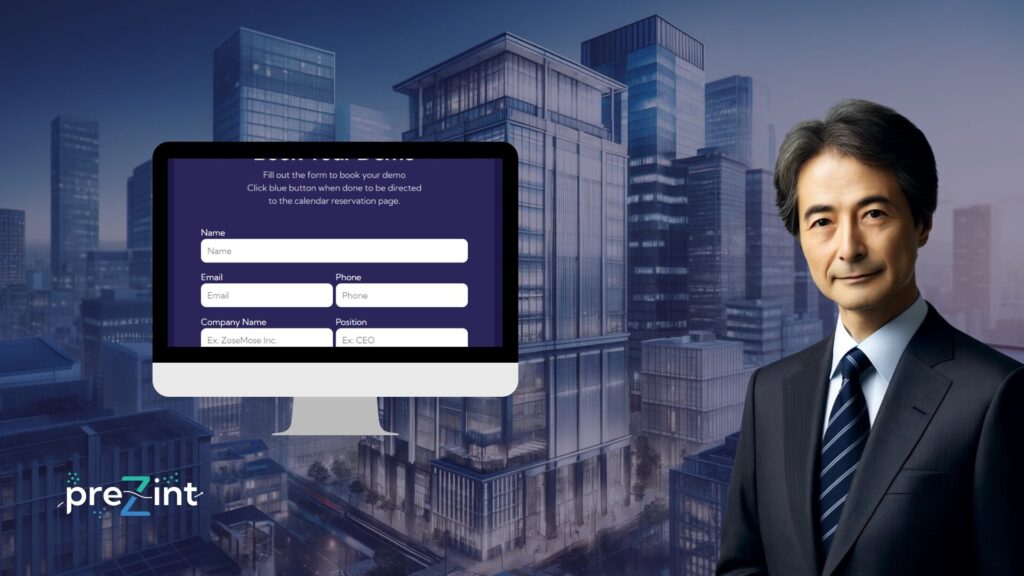
Scheduling
After questionnaire, reserve a date / time for demo.
Demo is held at your office or desired location
Benefit: See preZint live in person
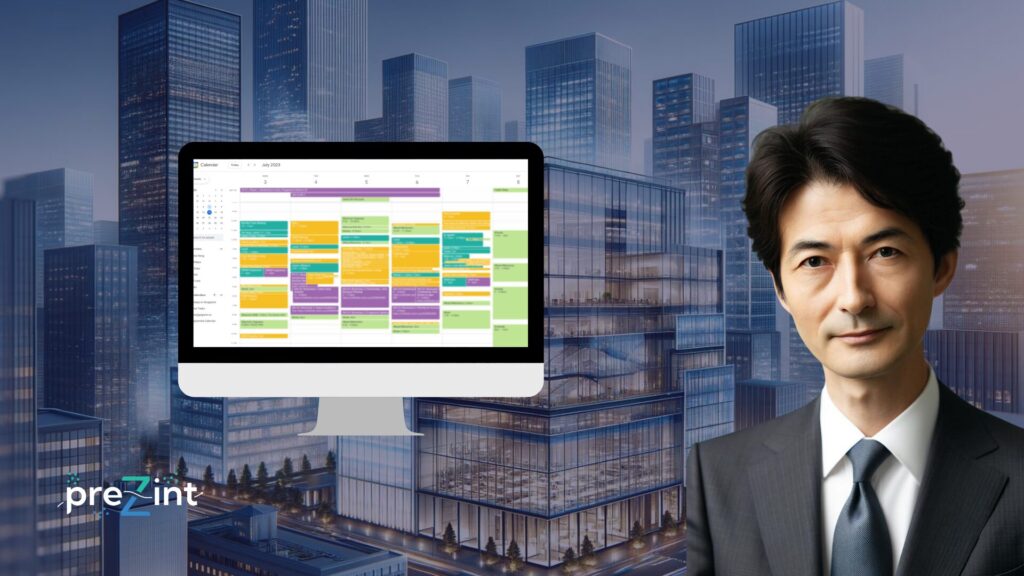
Live Demonstration
A sales representative & our expert will conduct a live demo at your desired location
Benefit: See for you industry how preZint can reduce operational costs by 30%


Book Your Demo
Fill out the form to book your demo
Click green button when done to be directed
to the calendar reservation page.
Your privacy is of our upmost concern. We will not share your information with any third parties. You can request that we delete your information at anytime.
Demo Is
What?
Your demo is the next step creating your customized preZint solution.
Below are some of the key points of the demo.
Below are some of the key points of the demo.
Questionnaire
Complete a questionnaire to understand
your companies specific & unique challenges
your companies specific & unique challenges
Benefit: Tailored insights to ensure
your demo addresses your exact needs
your demo addresses your exact needs


Scheduling
After questionnaire, reserve a date / time for demo.
Demo is held at your office or desired location
Demo is held at your office or desired location
Benefit: See preZint live in person
Live Demonstration
A sales representative & product specialist
will conduct a live demo at your desired location
will conduct a live demo at your desired location
Benefit: See for you industry how preZint
can reduce operational costs by 30%
can reduce operational costs by 30%

